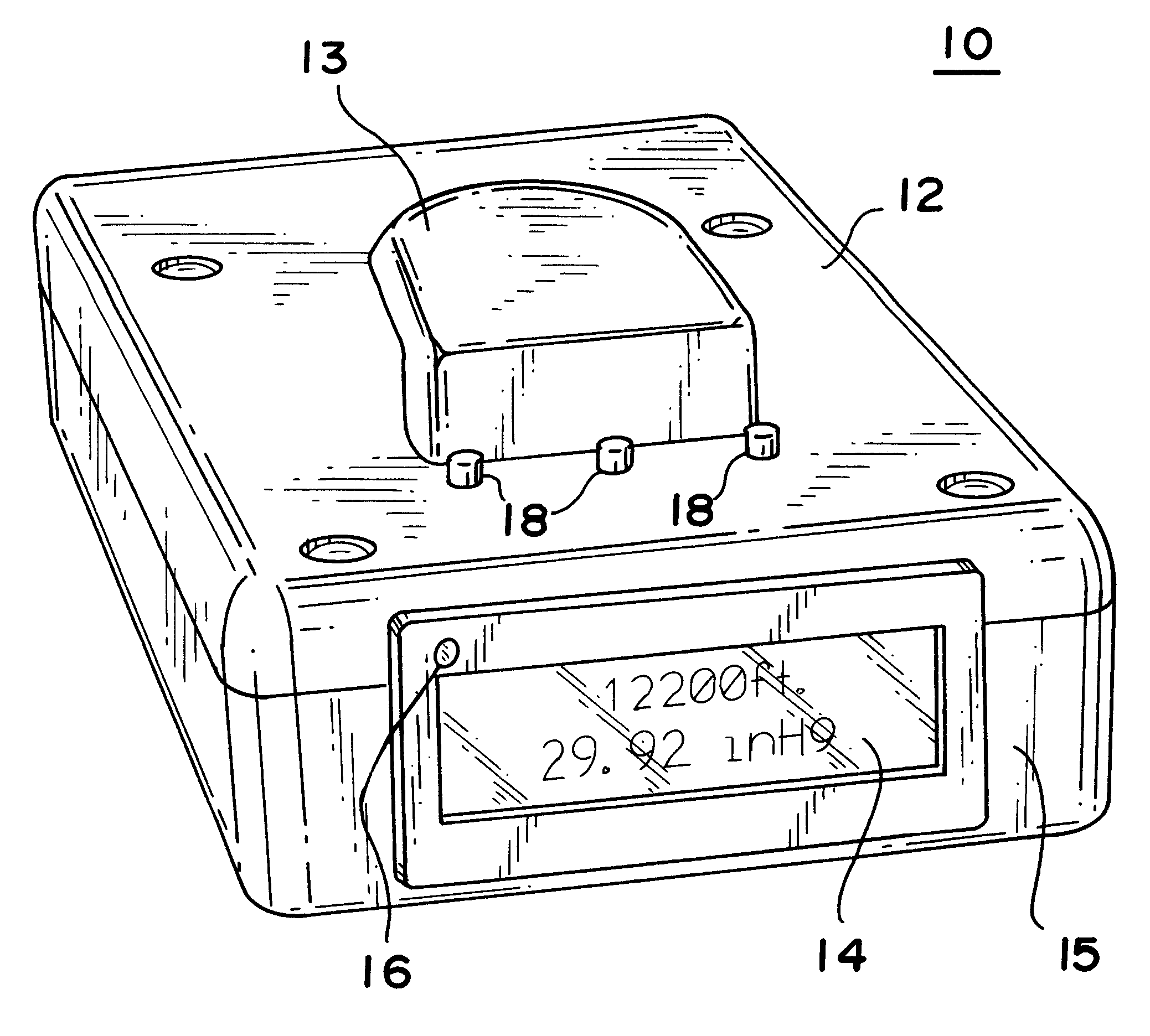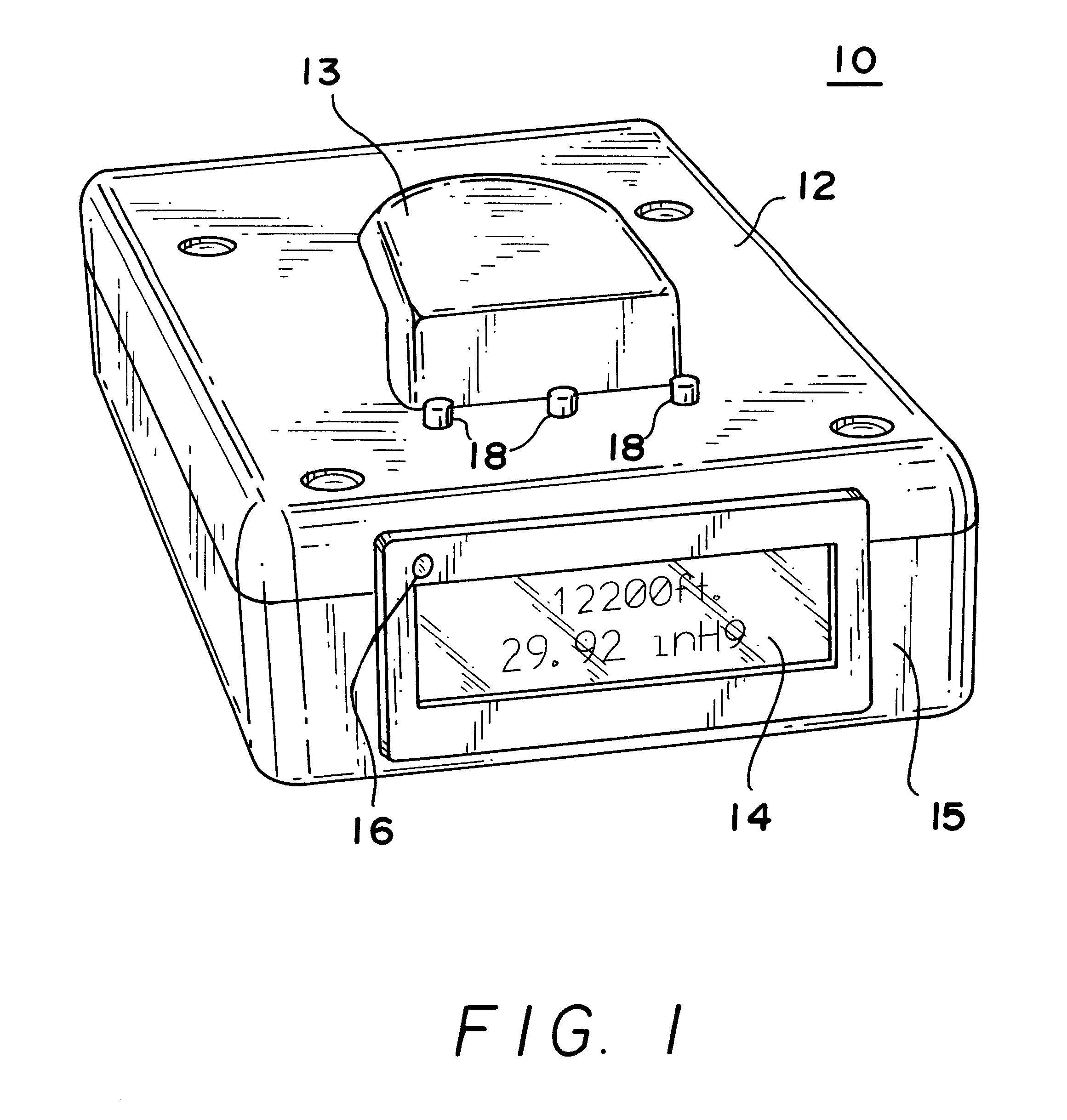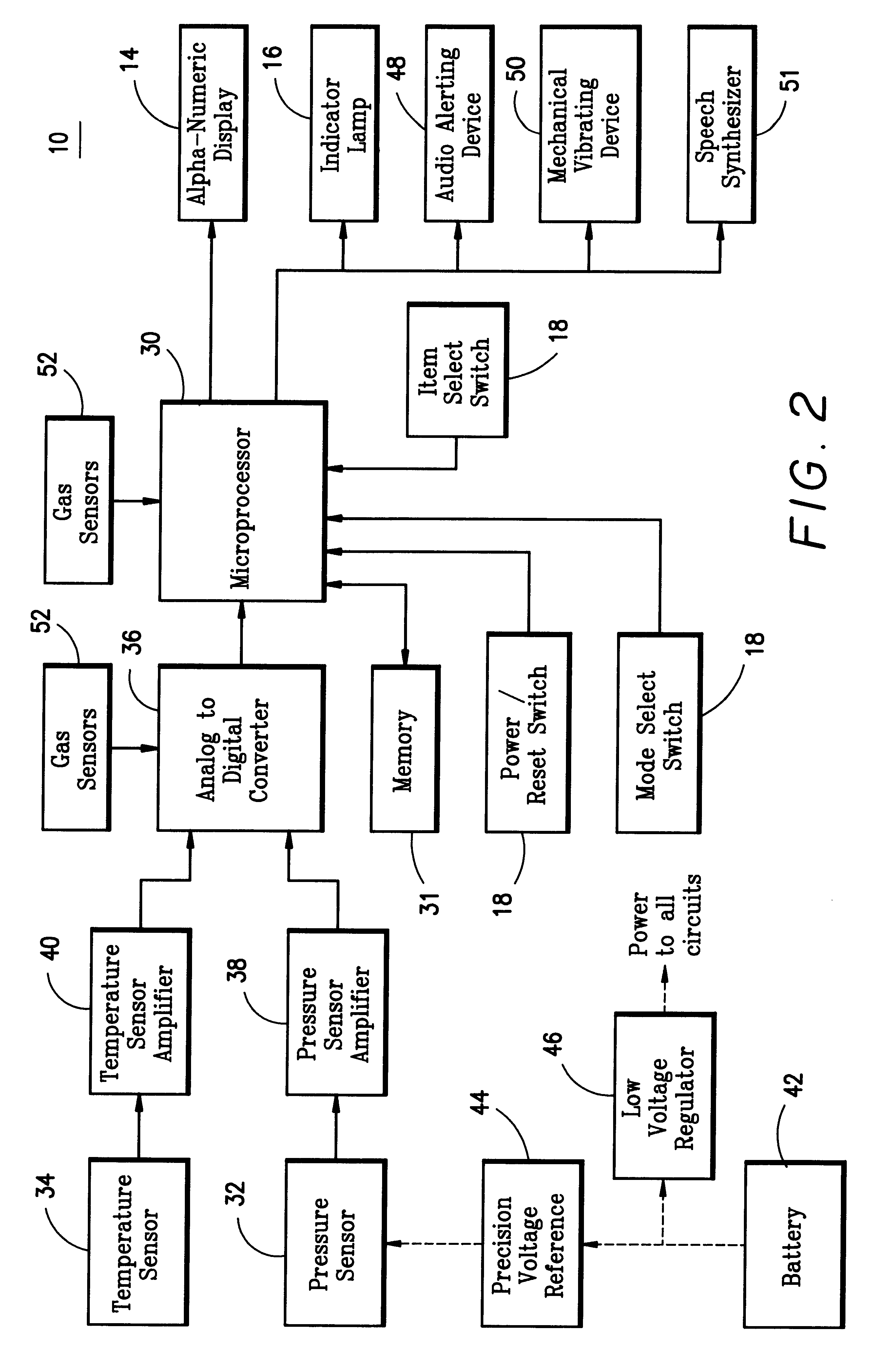Personal cabin pressure monitor and warning system
a monitor and cabin technology, applied in the direction of instruments, process and machine control, emergency apparatus, etc., can solve the problems of aircraft crew members and/or passengers being incapacitated, falling asleep or otherwise incapacitated, and performance can seriously deteriorate within fifteen minutes
- Summary
- Abstract
- Description
- Claims
- Application Information
AI Technical Summary
Benefits of technology
Problems solved by technology
Method used
Image
Examples
Embodiment Construction
With reference to FIGS. 1 and 2, a portable cabin pressure altitude monitor 10 is shown that is constructed in accordance with a preferred embodiment of the present invention. The monitor 10 includes a housing 12 that contains a number of circuit components as illustrated in FIG. 2, and discussed in greater detail below. Preferably, the housing 12 is approximately the size of a personal pager device so that the monitor 10 can be worn comfortably by a user by being attached to a belt, or held in a shirt pocket, for example. A securing clip 13 is preferably provided on the housing 12 for this purpose.
A visual display 14 is disposed one end 15 of the housing 12 that comprises a digital display, e.g., LCD, for displaying numeric or alphabetic characters, or special symbols to facilitate communication with the user. The display 14 provides various information depending on a selected operational mode of the monitor 10. This information includes, for example, pressure altitude (ft., nm, km...
PUM
 Login to View More
Login to View More Abstract
Description
Claims
Application Information
 Login to View More
Login to View More - R&D
- Intellectual Property
- Life Sciences
- Materials
- Tech Scout
- Unparalleled Data Quality
- Higher Quality Content
- 60% Fewer Hallucinations
Browse by: Latest US Patents, China's latest patents, Technical Efficacy Thesaurus, Application Domain, Technology Topic, Popular Technical Reports.
© 2025 PatSnap. All rights reserved.Legal|Privacy policy|Modern Slavery Act Transparency Statement|Sitemap|About US| Contact US: help@patsnap.com



